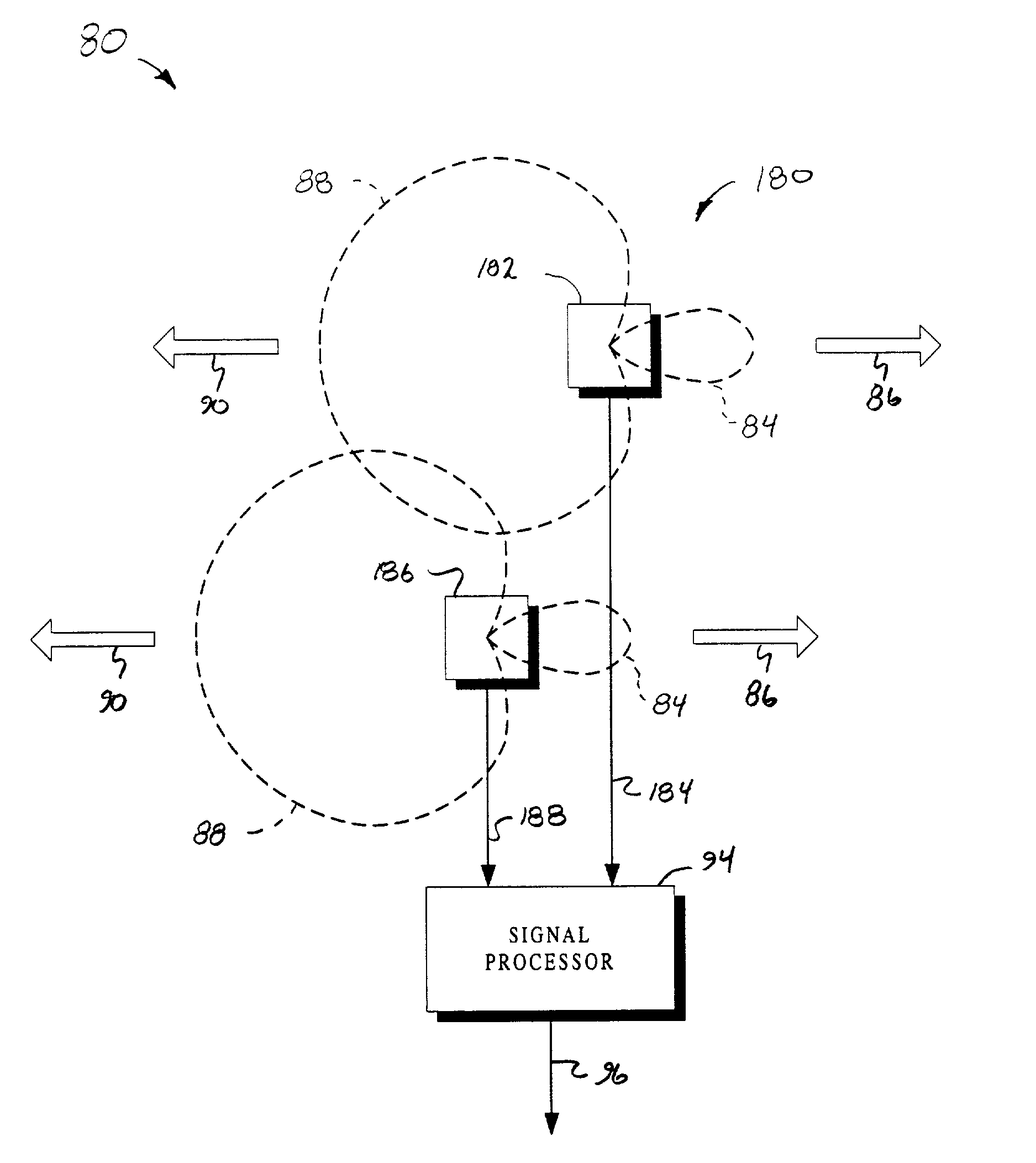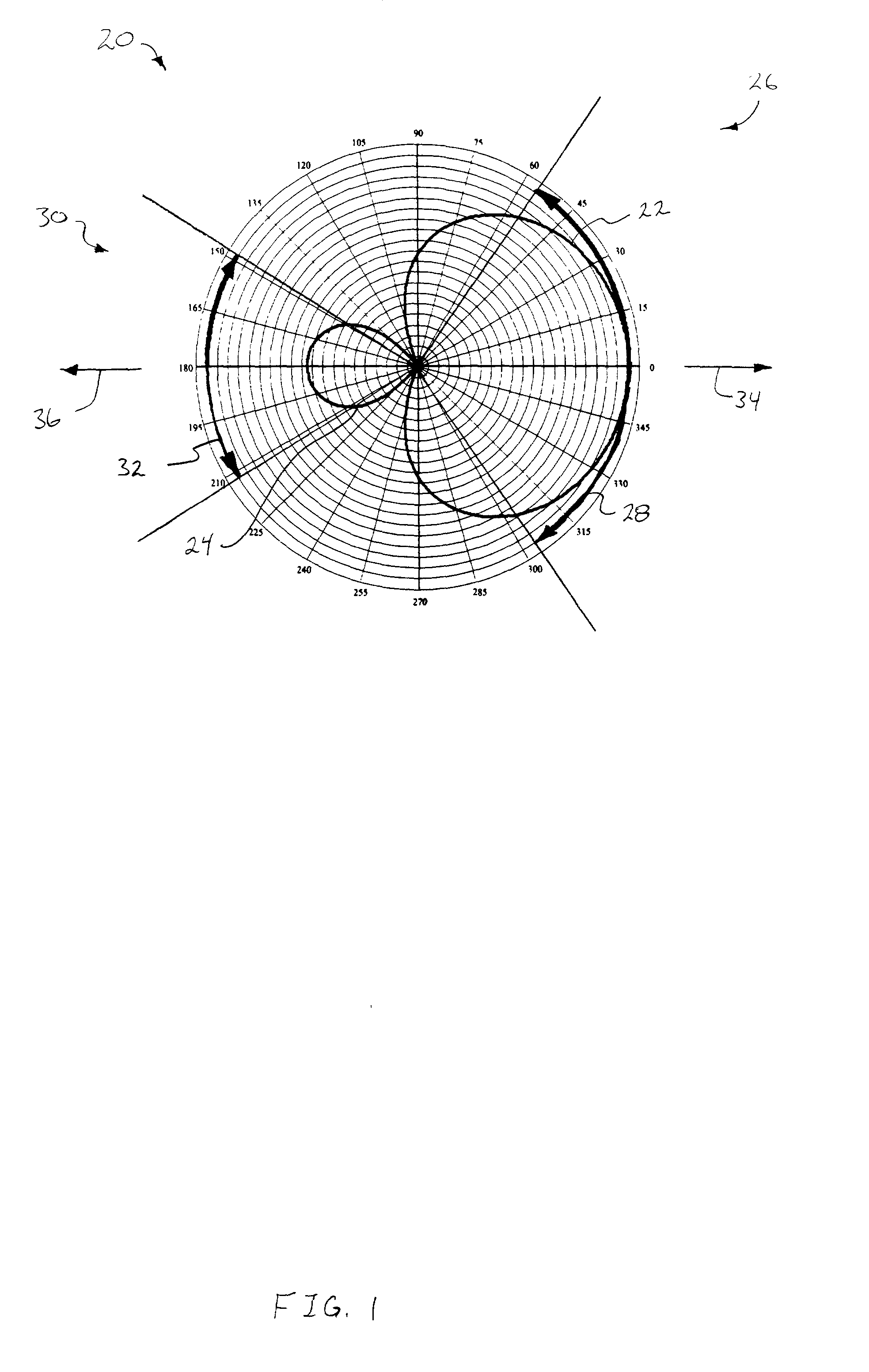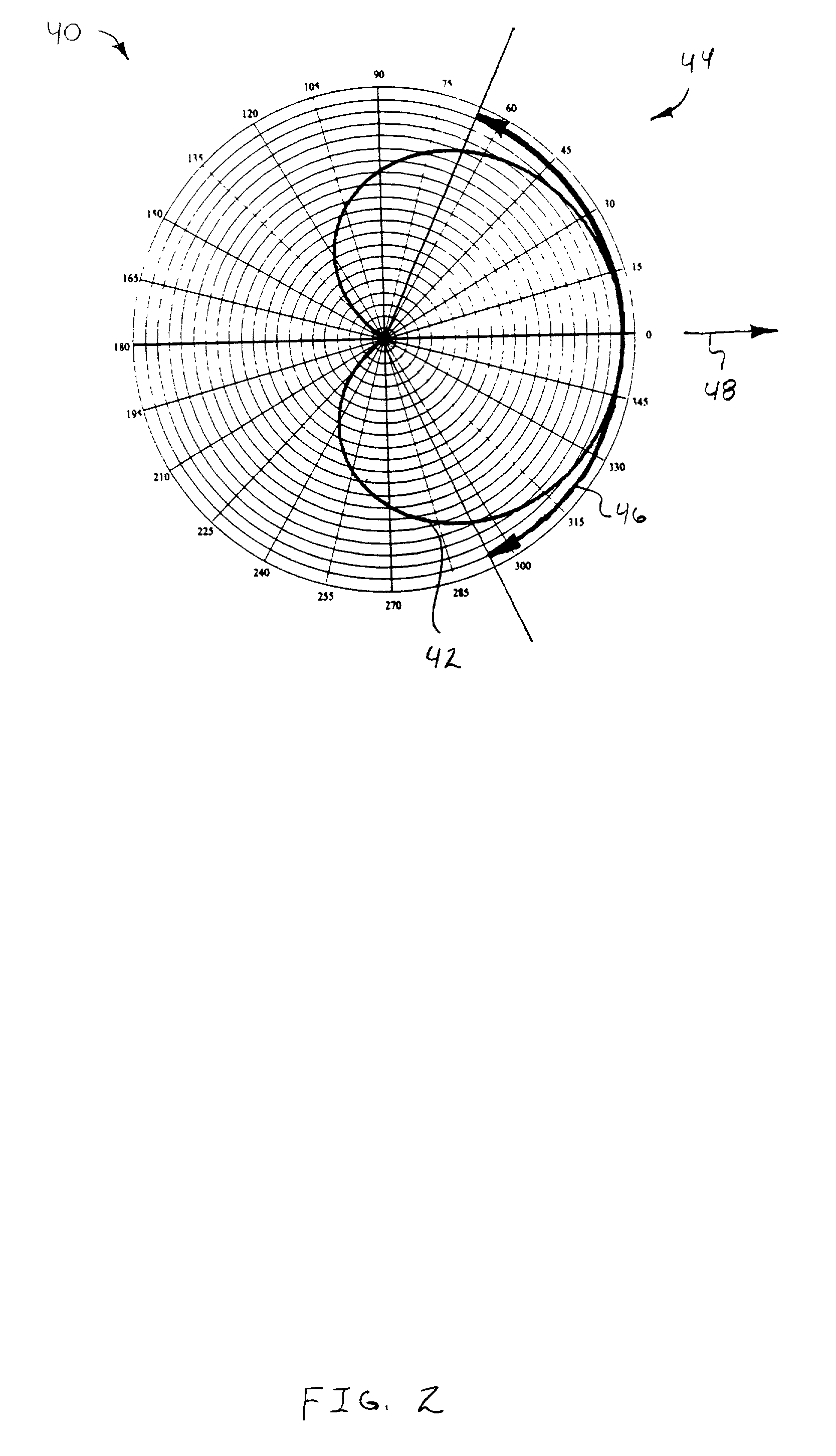Directional sound acquisition
a technology of directional microphones and directional microphones, applied in the field of sensing sound, can solve the problems of bulky directional microphones, low sound quality, and high cost of directional microphone transducers, and achieve the effect of reducing the effect of sound received
- Summary
- Abstract
- Description
- Claims
- Application Information
AI Technical Summary
Benefits of technology
Problems solved by technology
Method used
Image
Examples
Embodiment Construction
[0044]Referring to FIG. 1, a polar response plot of a microphone hypercardioid response pattern is shown. A hypercardioid polar response pattern, shown generally by 20, illustrates directional sensitivity to sound generated at various angular locations around a plane of the microphone. At a particular angular location about the microphone, a plot value farther from the center of polar plot 20 indicates a greater sensitivity. An ideal first-order hypercardioid plot, as depicted in FIG. 1, contains two lobes, major lobe 22 and minor lobe 24. Major lobe 22 has a greater peak sound sensitivity than minor lobe 24. Major lobe 22 is also less directional than minor lobe 24. This directionality may be numerically expressed as a beam angle. Major lobe beam angle 26 is defined by an arc in which major lobe 22 has a sensitivity within a certain fraction of the peak sensitivity. For example, half power angle 28 represents the angular region in which the sensitivity of major lobe 22 will receive...
PUM
 Login to View More
Login to View More Abstract
Description
Claims
Application Information
 Login to View More
Login to View More - R&D
- Intellectual Property
- Life Sciences
- Materials
- Tech Scout
- Unparalleled Data Quality
- Higher Quality Content
- 60% Fewer Hallucinations
Browse by: Latest US Patents, China's latest patents, Technical Efficacy Thesaurus, Application Domain, Technology Topic, Popular Technical Reports.
© 2025 PatSnap. All rights reserved.Legal|Privacy policy|Modern Slavery Act Transparency Statement|Sitemap|About US| Contact US: help@patsnap.com



